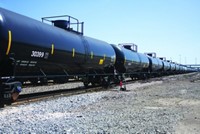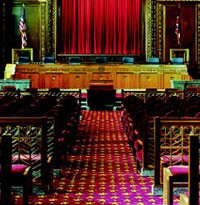Advertisement
Grab your lab coat. Let's get started
Welcome!
Welcome!
Create an account below to get 6 C&EN articles per month, receive newsletters and more - all free.
It seems this is your first time logging in online. Please enter the following information to continue.
As an ACS member you automatically get access to this site. All we need is few more details to create your reading experience.
Not you? Sign in with a different account.
Not you? Sign in with a different account.
ERROR 1
ERROR 1
ERROR 2
ERROR 2
ERROR 2
ERROR 2
ERROR 2
Password and Confirm password must match.
If you have an ACS member number, please enter it here so we can link this account to your membership. (optional)
ERROR 2
ACS values your privacy. By submitting your information, you are gaining access to C&EN and subscribing to our weekly newsletter. We use the information you provide to make your reading experience better, and we will never sell your data to third party members.
Policy
Industry Challenges 'Public Nuisance' Ruling
Chemical manufacturers say California court ruling could subject industry to open-ended product liability
by Glenn Hess
April 25, 2006
| A version of this story appeared in
Volume 84, Issue 18
A chemical-industry-led business coalition is urging the California Supreme Court to review a lower court's decision that the industry claims would create "limitless and open-ended liability for manufacturers whose products are sold in California."
A ruling in March by the state's 6th Appellate District Court "threatens to erode well-established doctrines" of California product liability law and would allow plaintiffs to circumvent the statute of limitations in such cases, the American Chemistry Council (ACC), the National Association of Manufacturers (NAM), and other business groups warn in a brief filed on April 24.
The opinion issued by the court of appeals regarding Santa Clara County v. Atlantic Richfield Co. broadly holds that paint manufacturers may be liable to various counties and cities suing under a "public nuisance" theory based on health hazards posed by paint applied before 1978, when manufacturers stopped putting lead in paint.
The coalition told the state Supreme Court that such a precedent would drive manufacturers and their products out of California and negatively impact commerce throughout the U.S.
"If this holding stands, it will open up an extraordinarily broad right of action against anyone who even indirectly contributed to a dangerous property condition including manufacturers of all types, as well as builders and other contractors who directly or indirectly participated in the use of potential irritants or other hazardous materials on property," ACC Deputy General Counsel Donald D. Evans told C&EN. "Because of its breadth, many members of ACC could be adversely affected by this decision."
Quentin Riegel, NAM's vice president for litigation, says he is concerned that lower courts have thus far permitted a public nuisance claim in this case even though the lead pigment products in question were used more than 20 years before the suit was filed and complied with government standards at the time.
"California's high court needs to get involved here and restore some common sense," Riegel remarks. "Otherwise, these nuisance suits—even those against manufacturers whose chemicals comprise a mere fraction of a given product—will routinely be brought by public agencies every time they decide that a purported 'public health hazard' requires abatement.
"The thinking is: Why make property owners or taxpayers pay for clean-up when we can make manufacturers pay?" Riegel notes. "But property owners and taxpayers are also consumers, and manufacturers would have no option but to pass the costs associated with increased liability on to consumers."




Join the conversation
Contact the reporter
Submit a Letter to the Editor for publication
Engage with us on Twitter